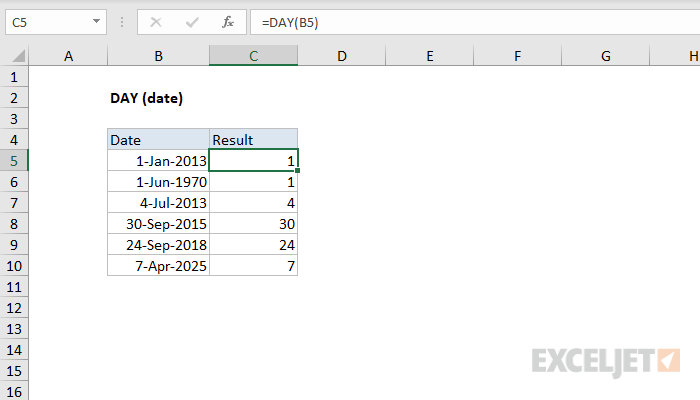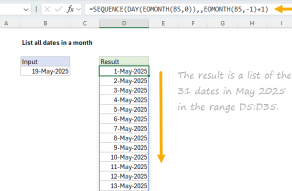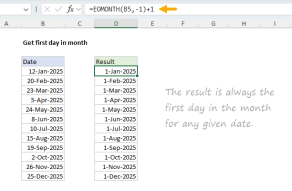Purpose
Return value
Syntax
=DAY(date)- date - A valid Excel date.
Using the DAY function
The DAY function returns the day component of a given date as a number between 1 to 31 from a given date. For example, with the date January 15, 2019 in cell A1:
=DAY(A1) // returns 15
You can use the DAY function to extract a day number from a date into a cell. You can also use the DAY function to extract and feed a day value into another function, like the DATE function. For example, to change the year of a date in cell A1 to 2020, but leave the month and day as-is, you can use a formula like this:
=DATE(2020,MONTH(A1),DAY(A1))
See below for more examples of formulas that use the DAY function.
Note: in Excel's date system, dates are serial numbers. January 1, 1900, is number 1 and later dates are larger numbers. To display date values in a human-readable date format, apply a number format of your choice.
Notes
- The date argument must be a valid Excel date.
- The DAY function returns #VALUE! if the date is not valid.





















